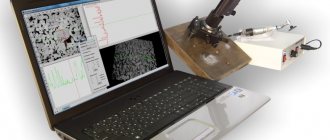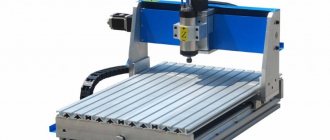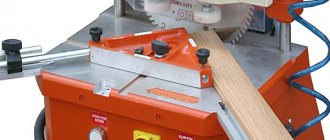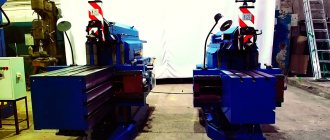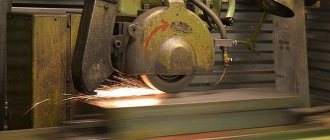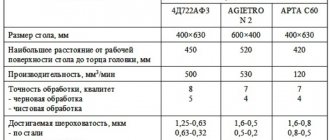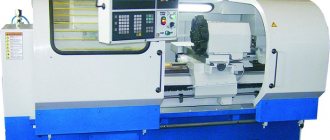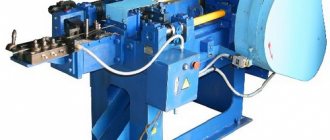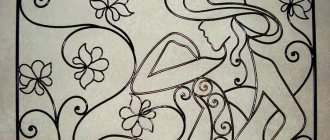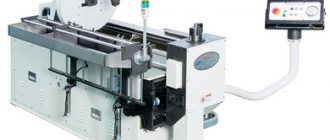In serial and mass production of furniture, drilling and additive machines are used, which help optimize technological processes and increase productivity. They are used to produce a large number of through and blind holes of a given diameter in the planes and ends of bar parts and panels.
offers reliable and high-performance furniture drilling machines HIRZT-MAGGI
(Italy),
IMA
(Germany) and
DETEL
(Slovenia). Drilling is performed without peeling, chipping or other damage to the workpiece. The most accurate positioning of mounting holes for installing fittings and fasteners ensures high quality when assembling furniture.
Drilling attachment machine design
In its design, the drilling and additive machine is in many ways reminiscent of its distant relative - a multi-spindle machine for drilling frames. This device is used by beekeepers to make frames for honeycombs. Its design allows for a maximum of 5 holes. Machines for furniture production have the ability to simultaneously drill 21 and even 27 holes.
The basis of the drilling and additive machine is a massive bed. A drilling head and a clamping device are installed on it. In the classic version, pneumatic cylinders are used to fix the workpiece on the work table, but the drilling head can have several design options - it can be stationary, multi-profile, located vertically or horizontally. In the most advanced devices, the position of the drilling head can change, even be installed at an angle.
The most important element of the device is the drilling head. Essentially, this is a rail with holes, inside of which collets are mounted on bearings into which drills, countersinks or reamers are inserted. On the reverse side, the collets have a drive - a belt, chain or gear drive. This structure is driven by an electric motor.
To correctly orient the workpiece relative to the drilling head, a work table with a coordinate grid or rulers is used to set templates. To ensure that when manufacturing several similar products there are no deviations from the sample, stops are provided in the design.
The control unit allows you to select the spindle rotation speed; in most industrial designs, the speed can be selected in the range from 1 to 2700 rpm.
The simplest models have mechanical adjustment of the drilling height and depth, while devices with a hydraulic system have an electronic adjustment system.
The device of a homemade unit
A do-it-yourself machine must include the following components:
- Base (parallelepiped, a movement mechanism, a switch, a socket, a speed controller are attached inside, the body is mainly made of metal plates).
- Switch (allows you to turn the device on and off for operation).
- Drill holder (a metal structure of a certain diameter into which the drill is inserted).
- Move handle.
- Speed control knob (allows you to increase or decrease the speed of drilling holes).
- Stand (rectangle where the entire structure is attached).
- Column (connects the base of the instrument to the stand).
Filler machine diagram
The machine is not difficult to make. To do this, you don’t need to purchase special parts from the store, just an old tool that almost everyone has in their garage.
This is interesting: Homemade bench vise: video, photo, drawings
Purpose
In the woodworking industry, with the beginning of conveyor furniture production, not only new materials, but also equipment for their processing began to be used. One of these types of equipment was the drilling and filler machine. Its main purpose is to drill holes in slab materials for installing fasteners. When using hand tools, it would never be possible to drill an exact size hole in a chipboard or MDF board for tenons, confirmation, hinges or handles. In addition to high precision, the drilling and filler machine made it possible to unify the installation dimensions of individual elements and increase productivity.
The production of cabinet furniture from panel materials today is impossible without the use of this type of equipment.
Additive system 32
Furniture machines and furniture fittings are respectively designed in such a way that the distance between holes located on the same straight line is DIVIDED by 32 mm. Moreover, both in width and in length and at the end of the part. This standard is called "System 32".
According to this international standard, furniture dimensions are calculated based on DRILLING CONVENIENCE. Economy class furniture, which is sold in chain stores, is designed according to System 32.
System 32 highlights:
- Center-to-center distances between holes are divided by 32 mm - according to this rule, both drilling machines are manufactured (the distance between adjacent drills is exactly 32 mm) and fittings (the distance between the fastenings of handles, drawer guides, hinge fastening strips, etc.)
- The design of the parts is such that there are no “right” and “left” parts - they are interchangeable.
- The distance from the front side of the part to the first hole is 37 mm, the next ones are multiples of 32 mm.
- The main hole is 5mm in diameter in the plane of the part.
Non-standard drilling of holes in chipboard However, individual furniture does not always fit into this system. Understanding this, we suggest you use the following types of holes:
For the manufacture of furniture according to an individual project, we offer the following types of holes:
Holes in the plane of the part
Diameter 5 mm depth 13 mm (D5x13) – for shelf supports, eccentric rods, hinge bushings, etc.
Diameter 8 mm through (D8) – for confirmat (euroscrews)
Diameter 8 mm depth 13 mm (D8x13) – for dowels, footers, etc.
Diameter 15 mm depth 13 mm (D15x13) from the edge of the part to the center of the hole 34 mm - for eccentrics with a long rod
Diameter 20 mm depth 13 mm (D20x13) from the edge of the part to the center of the hole 9.5 mm - for eccentrics with a short rod (so-called reinforced)
Diameter 35 mm depth 12 mm (D35x12) from the edge of the part to the center of the hole 22.5 mm - for hinges with a 35 mm cup. IMPORTANT: If the sketch does not indicate the depth of the hole, we consider it equal to 12 mm
Holes in the end of the part
Diameter 5 mm depth 34 mm (D5x34) – for confirmat 50 mm long
Diameter 8 mm depth 24 mm (D8x24) – for a dowel measuring 8x30 mm
Diameter 8 mm depth 34 mm (D8x34) – for a long eccentric rod
Additional holes in the plane of the part
Diameter 5 mm through (D5) - for attaching handles, intersection ties
Diameter 37 mm depth 13.5 mm (D37x13.5)
Diameter 60 mm through (D60) – for cable ducts
Diameter 50 mm depth 12 mm (D50x12) – for mortise handles
Please note that:
- The center-to-center distance in width should be a multiple of 32 mm, the amount of indentation from the edge of the part is at your discretion.
- Dimensions in the sketches include the edge and are indicated from one base side.
- The sketches indicate the part number in accordance with the form.
- The font size and sketch size should be such that everything, especially the DIMENSIONS and DIMENSION LINES, is CLEARLY visible when printed on an A4 sheet.
- For shelves with eccentrics - the same distance from the front and rear edges of the shelves to the center of the front and rear eccentric, respectively.
- The cost of drilling holes for an eccentric with a long rod is significantly higher than the cost of drilling holes for an eccentric with a short rod (the so-called “reinforced”), because there are more holes.
- Do not indicate edges using the method of multi-colored lines - when printing in black and white they are not visible; the background of the drawing must be white.
- There is no need to clutter the drawings with repeated dimensions.
- Dimensions must be rounded to the nearest whole number, for example, instead of 93.45 mm, indicate 93 mm.
As our experience shows, the most terrible drawings are from Basis-Furniture Maker and AutoCAD.
Read also: Adapter for hammer drill to drill
The main complaints about these drawings:
- 1) Dimensions are printed in extremely small font
- 2) Dimension lines are the same thickness as the main lines - it is often impossible to understand the shape of the part
- 3) The drawings are littered with unnecessary information, so much so that the dimensions are not visible.
- 4) Contradiction of sizes on sketches and form
Apparently this is because either the authors of these programs did not take drawing lessons, or the majority use an unconfigured hacked version.
Examples of sketches for the additive:
A drilling and filler machine is equipment for wood processing , with the help of which holes are drilled in through-type or blind-type workpieces. It is most often used in the production of various pieces of cabinet furniture, including furniture for the kitchen, bathrooms or cabinets.
These machines must ensure high precision of work, since it is necessary to make many holes with an exact location in relation to each other; defects are not allowed in such work.
A modern furniture additive machine is not only highly accurate, but also a multifunctional device that can operate in automatic mode uninterruptedly and requires almost no intervention from you. Today we will talk about the features of such machines.
Types of filler machines
There are several classifications of drilling and filler machines. Depending on the number of spindles on the working head, they can be classified into:
- With one spindle;
- Multi-spindle.
If we consider how the drilling head performs the work, the equipment can be divided into:
- Manual - the movement of the head is carried out using the movements of the worker;
- Electric – the work is performed by an electric motor;
- Hydraulic – movement is carried out by a hydraulic cylinder;
- Pneumatic - movement is carried out by a pneumatic drive.
If we take into account how the workpiece is processed, today there are 3 main types of industrial filler machines:
- Positioning devices;
- Passage;
- Equipment with numerical program control.
The simplest are pass-through machines. They have a simple design and are capable of performing one or two operations. When working with this type of equipment, the operator plays a big role; it is he who sets it up and ensures that the workpiece is laid evenly on the work table. The drill head then drills the holes.
Despite the high labor intensity of working on such equipment, they are very popular because they do not require large costs and special knowledge of personnel, but at the same time have high productivity.
The through-hole drill and filler machine provides higher productivity because it uses conveyor elements. The large dimensions of the work table allow you to work with large workpieces. Before drilling, the workpiece is fixed with hydraulic or pneumatic clamps and only after that the holes are drilled. In this case, the workpieces move along a roller belt, which allows increasing the flow of processed parts.
A CNC additive machine allows for maximum speed and quality of parts processing. The electronic control unit ensures the accuracy of marking and drilling, while the spindle can change position depending on the drilling point. Thanks to the use of computer technology, reconfiguring the device takes only a few seconds, and the precision of processing allows you to assemble furniture of the highest quality. In addition to high operating speed, a CNC drilling and adding machine equipped with several drilling heads can simultaneously carry out vertical and end drilling, make holes of different diameters and purposes.
Types of models
On an additive machine, several similar tools simultaneously perform their functions - drilling units, countersinks, which are mounted in a head with several spindles.
According to purpose, this equipment is divided into:
- Universal furniture machines;
- Specialized equipment;
- Special mechanisms.
Universal equipment - designed for complete hole preparation, from drilling to full processing with other devices. They are often used in the serial production of furniture; they are capable of performing many functions. Small models with low energy consumption are suitable for beginner amateurs. Specialized devices - designed for conveyor processing of necessary parts. They are capable of processing a certain number of holes at the same time. Can be customized for different operations. Most of the additive equipment falls into this category. Special mechanisms are intended only for processing workpieces of a certain configuration. It is impossible to reconfigure them for other operations on your own.
The mechanisms are distinguished by the number of spindles and traverses:
- Drilling-filler and semi-automatic;
- Positional additives;
- Drilling and filler machines with programmable control;
- Additive mechanisms for hinges.
The best end result of using these mechanisms can only be obtained by understanding the features of its design and operation.
Special mechanisms
Universal
Specialized
Single head mechanisms
In such a machine, the workpiece is clamped with clamps on the tabletop in accordance with the indications of the guide ruler. In this way, the workpiece is positioned correctly relative to the tools. When the motor is running, the head moves towards the workpiece. The mechanism does its job, and the operator, using the remote control, releases the clamps and changes the workpiece.
The versatility of the installation is achieved by moving the spindles by 90 degrees. This feature is used for cutting grooves and processing beveled sides. Voids are created in the tabletop for moving drills at the bottom of the workpiece. Such equipment is successfully used in small organizations with a small flow of processed parts.
Multi-head mechanisms
Among the working tools of this equipment, various devices are used - all kinds of heads for drilling material, and one for finishing the edge of the workpiece. The frame has a support necessary for securing the workpiece in the desired position. The workpiece is placed on special strips and clamped with clamps. During engine operation, several heads operate simultaneously. This is expensive equipment; it additionally contains control mechanisms, speed adjustment and part position controllers.
Differences between machines with multiple spindles and machines with a single spindle:
- The position of the heads is controlled by an electronic device, for this reason the parts are processed with high precision, additional adjustments are carried out quickly;
- You can process 2 planes at once, the work is done with great accuracy and faster. For another run of several similar workpieces, there is no need to readjust the unit;
- Vertical heads can make holes at the required angle;
- Additionally, the support table has devices for replacing parts, which free a person from manual work. This equipment belongs to position-through installations. They are often used in conveyor furniture production. In this case, the machines process the part as it moves along the conveyor; this application significantly saves time and completely eliminates the need to do the work manually.
The bulk of industrial equipment belongs to this type.
How to choose the right drilling and filler machine
The main criterion for choosing equipment is economic feasibility. If we are talking about small-scale production of cabinet furniture, then it is better to use a regular electric drill with several templates. For small production, one multi-spindle device with a head rotation function will be sufficient. For a small furniture factory, the assortment of which will include cabinet furniture, sofas, beds and office furniture, it is better to immediately pay attention to program-controlled equipment.
How to make it yourself
There are a lot of options for making homemade drilling devices for working with slab material. Drawings of many such devices are freely available online. You can also get ideas on how to make a homemade additive machine for furniture from advertising videos posted by manufacturers on the pages of their websites.
But today the most popular are devices assembled on the basis of electric drilling machines. Hand drills are essentially a ready-made drilling and attachment machine, although it has only one loop. It’s another matter if you assemble two identical electric drills into a single unit and install them on movable slides, so that the drilling movement is simultaneous.
The design can provide for both vertical and horizontal arrangement of working chucks. True, with a vertical arrangement it will be quite difficult to make a structure so that the drills fall strictly vertically. With horizontal feeding, this can be done much easier by using drawer guides in the design.
An option for constructing a device for drilling for a hinge may be to use industrially manufactured stands for a hand drill. In this case, all that remains is to take two racks and fix them at the required distance, providing a mechanism for synchronized lowering and raising of the heads. And in order not to drill through the workpiece, you can use a regular stop, which is included with the hand drill.
Multi-spindle drilling head
An additive machine of any type certainly contains this element.
The head consists of spindles installed in a row at equal intervals of 3.2 cm. This is a standard for furniture equipment that almost all manufacturers adhere to.
Differences are possible for special devices, for example, those that make holes for façade hinges. Drilling parameters depend on the characteristics of the hinges.
The movement from the electric motor comes through gears located inside the head. The head, depending on the number of spindles, can be equipped with a pair of electric motors. A similar scheme determines the rotation of the spindles in different directions. Therefore, drills with right and left screws can be used as executive bodies. Spindles rotating from the same motor are marked with the same color.
The spindle speed is maintained within 2700 rpm. Most often, multi-spindle heads contain 21 or 27 spindles. The gap between the outer drills in such devices is 64 and 83.2 cm. Drills with a diameter of 5 mm and 10 mm are easily inserted into chucks.
The head feed mechanism consists of a pneumatic drive and guides. You can adjust the drill feed rate along the axis using electronic sensors or stops; it varies from 4 to 9 cm and determines the depth of the holes in the workpiece.
Operating rules
First of all, when starting work, you must remember that a drilling and additive machine is a highly dangerous item, so it is imperative to adhere to all safety rules and regulations when working on this equipment. You can only operate a drilling and additive machine wearing special glasses or a protective mask.
The setup is carried out with the engine turned off and the power turned off. For customization, blank templates that are made by hand are used. On multi-spindle devices, it is necessary to correctly select drills with right and left feed. To orient the direction of movement of the spindle, patterns are applied to the head.
Drills, countersinks, and reamers are installed in collets taking into account the drilling depth. After installing all the necessary cutting tools, a control measurement and test drilling are done.
Advantages and disadvantages
The undoubted advantages of drilling and filler machines are:
- high speed of work performed;
- production automation;
- variety of operations performed;
- high drilling accuracy.
The only disadvantages include the high price of machines, expensive maintenance and repairs, and the cumbersome nature of the equipment. Also, it is worth noting the high cost of components for additional work. But this applies more to CNC machines.
